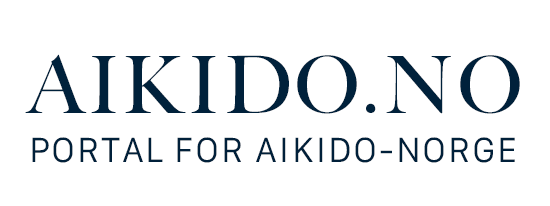Aikido is a Japanese martial art based on the principle of guiding the attacker’s energy away, without causing harm or using force. The focus is on self-development, and there is no competition or harmful offensive techniques. Instead, the practitioner learns to face an attack in a controlled manner, and to utilise inner strength, balance, and timing to neutralise the attacker. Because aikido is based on these principles, everyone can practice aikido together regardless of gender, age, weight class, and experience level.
Aikido was founded by Morihei Ueshiba (1883 – 1969), often referred to as O-sensei (great teacher). Morihei Ueshiba lived a very eventful life. In addition to being a farmer, soldier and entrepreneur, he devoted his life to studying budo, and he gained wide recognition both as a master and practitioner. He based the technical basis of aikido on traditional martial arts such as jujutsu (especially daito-ryu aiki-jutsu) and kenjutsu (including the sword school yagyu). O-sensei was a deeply religious man, and he saw aikido as a path to spiritual awakening and reconciliation between people.
Modern aikido is a path that balances physical, mental and spiritual development, regardless of the practitioner’s cultural background. In technical terms, aikido consists of throwing and pinning techniques that capture and direct the opponent’s energy in circular motions. A training session usually consists of breathing and stretching exercises, falling techniques and practising various movement principles. After this techniques of attack and defense follow. As a beginner, you practice given techniques in predefined roles. With time, elements of free technique and greater challenges to balance and efficiency are introduced. Weapons (such as swords, staffs and knives) are sometimes used in training, and many clubs offer separate weapon classes for those who are particularly interested.
The legacy of Japanese samurai culture is visible through the use of hakama (traditional, wide trousers). When we train Aikido in a dojo, we follow Japanese etiquette, out of respect for each other and for the traditions we maintain. In the dojo, virtues such as integrity, courage, perseverance, respect and service to others are promoted. Aikido, like many other martial arts, has a grading system, with a white belt up to a certain level (6th to 1st kyu) and then a black belt from 1st dan and up. Highly rated instructors can achieve certification as fukushidoin, shidoin or shihan.
Here is an interview with Shihan Bjørn Eirik Olsen, leader of the Norwegian Aikido Federation technical committee
What is aikido, and why is it important?

AI means harmony. By building on a principle of wholeness and unity, the partner’s attack is captured in our own force field.
KI can be translated as life force or universal energy. Ki is latent in everything and everyone, and in aikido this power is strengthened through breathing techniques and exercises.
DO is a path or method of physical and spiritual development and self-knowledge. Aikido is a path that promotes vitality and wholeness – in the individual and between people.
«In true budo there is no enemy or opponent. True budo is to become one with the universe.»
– Morihei Ueshiba
